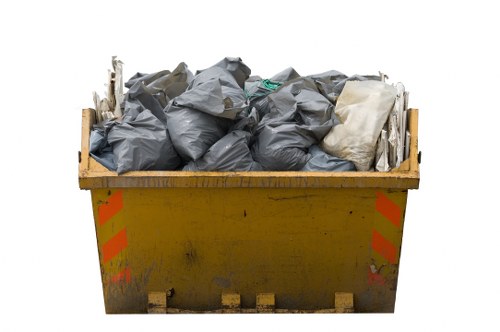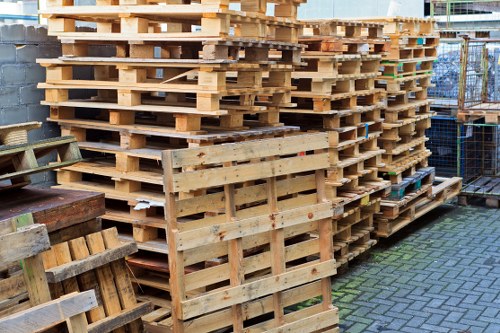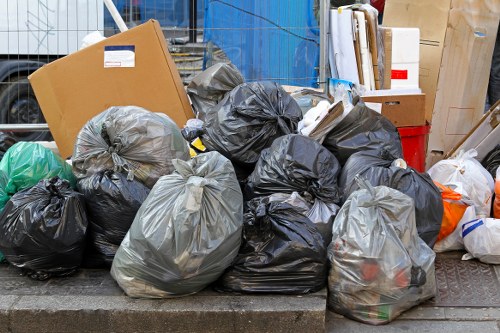Managing Builders Waste in East London: Sustainable Solutions for a Cleaner Future

Understanding Builders Waste
Builders waste, also known as construction and demolition (C&D) waste, comprises materials generated during construction, renovation, and demolition projects. In East London, the rapid growth and urban development have led to a significant increase in builders waste. Proper management of this waste is crucial for environmental sustainability, community health, and regulatory compliance.
Types of Builders Waste include concrete, bricks, wood, metals, glass, plastics, and hazardous materials such as asbestos. Each type requires specific handling and disposal methods to minimize environmental impact.
East London's diverse architecture, ranging from historical buildings to modern constructions, contributes to the variety of builders waste produced. Effective waste management strategies must address this diversity to ensure comprehensive solutions.

The Impact of Builders Waste on East London
Improper disposal of builders waste can lead to severe environmental and societal issues. Landfills are rapidly reaching capacity, and the decomposition of certain materials can release harmful substances into the soil and water. Moreover, the accumulation of waste around construction sites can pose safety hazards to workers and nearby residents.
Environmental Impact:
- Soil Contamination: Hazardous materials like asbestos and lead can seep into the ground, affecting local ecosystems.
- Water Pollution: Runoff from construction sites can carry pollutants into rivers and canals, disrupting aquatic life.
- Air Quality: Dust and particulate matter from demolition can degrade air quality, contributing to respiratory issues.
Addressing these impacts requires a coordinated effort from builders, waste management companies, and local authorities to implement sustainable practices.

Regulations Governing Builders Waste in East London
Compliance with local and national regulations is essential for managing builders waste effectively. In East London, various laws dictate how construction waste should be handled, transported, and disposed of.
Key Regulations
- Waste Framework Directive: Establishes the hierarchy for waste management, prioritizing waste prevention, reuse, and recycling.
- Environmental Protection Act: Regulates the disposal of hazardous waste and imposes penalties for non-compliance.
- Landfill Tax Regulations: Incentivizes recycling and recovery by making landfill disposal more expensive.
Staying informed about these regulations helps builders avoid legal issues and promotes environmentally responsible practices.

Effective Builders Waste Management Strategies
Implementing effective waste management strategies can significantly reduce the environmental footprint of construction projects in East London. Here are some proven methods:
Waste Reduction
Minimizing the amount of waste generated is the first step. This can be achieved through careful planning, accurate material estimation, and adopting construction techniques that produce less debris.
Recycling and Reuse
Recycling materials like concrete, wood, and metals can divert significant amounts of waste from landfills. Additionally, reusing materials on-site or donating them to other projects extends their lifecycle and conserves resources.
On-Site Segregation
Separating waste at the source ensures that recyclable and hazardous materials are appropriately handled. Clear labeling and designated collection areas facilitate efficient sorting.

Choosing the Right Builders Waste Disposal Services
Selecting a reliable waste disposal service in East London is critical for effective builders waste management. Key factors to consider include:
- Licensing and Certification: Ensure the provider complies with all relevant regulations and possesses the necessary certifications.
- Range of Services: Look for companies offering comprehensive solutions, including collection, recycling, and safe disposal.
- Reputation and Reviews: Research customer feedback to gauge the quality and reliability of the service provider.
- Cost-Effectiveness: Compare pricing structures to find a service that fits your budget without compromising on quality.
Partnering with the right disposal service not only ensures compliance but also promotes sustainable building practices.

Innovative Solutions for Sustainable Builders Waste Management
Advancements in technology and innovative approaches are transforming builders waste management in East London. Embracing these solutions can enhance efficiency and sustainability.
Automated Sorting Systems
Automation in waste sorting increases accuracy and speed, reducing the labor required and minimizing contamination of recyclable materials.
Material Recovery Facilities (MRFs)
MRFs are specialized plants that process and sort recyclable materials, ensuring high recovery rates and reducing the reliance on landfills.
Green Building Practices
Incorporating green building principles, such as using sustainable materials and designing for deconstruction, can significantly lower the volume of builders waste generated.

The Role of Community in Builders Waste Management
Community involvement is vital for the success of builders waste management initiatives. Educating residents and stakeholders about the importance of proper waste disposal fosters a collaborative environment.
Public Awareness Campaigns
Launching campaigns to inform the public about the environmental impacts of builders waste and the benefits of recycling can drive behavioral change and support sustainable practices.
Community Recycling Programs
Establishing local recycling centers and providing resources for households and businesses to participate in waste segregation encourages widespread participation.
Partnerships with Local Organizations
Collaborating with environmental groups, schools, and businesses can amplify efforts to manage builders waste effectively and promote sustainability in East London.

Cost Benefits of Proper Builders Waste Management
Effective builders waste management can lead to significant cost savings for construction projects in East London. By reducing waste, recycling materials, and complying with regulations, businesses can optimize their budgets.
Reduced Disposal Fees
Minimizing the volume of waste sent to landfills lowers disposal costs. Additionally, some materials can be sold or reused, generating additional revenue streams.
Improved Efficiency
Streamlined waste management processes enhance overall project efficiency, reducing delays and increasing productivity.
Enhanced Reputation
Adopting sustainable waste management practices enhances a company's reputation, making it more attractive to environmentally conscious clients and partners.

Future Trends in Builders Waste Management
The landscape of builders waste management in East London is evolving, with several trends poised to shape the future:
Circular Economy Models
Transitioning to a circular economy, where materials are continuously reused and recycled, reduces the dependency on raw resources and minimizes waste generation.
Smart Waste Management Technologies
The integration of IoT and data analytics in waste management systems enables real-time monitoring, predictive maintenance, and optimized logistics.
Regenerative Building Practices
Regenerative practices, which focus on restoring and enhancing environmental ecosystems through construction, are gaining traction as a sustainable alternative to traditional methods.

Conclusion: Building a Sustainable East London
Effective management of builders waste is essential for fostering a sustainable and thriving East London. By understanding the types and impacts of builders waste, adhering to regulations, implementing innovative strategies, and fostering community involvement, stakeholders can significantly reduce environmental footprints and promote a cleaner future.
Take Action Today: Ensure your construction projects contribute to a sustainable East London by adopting responsible builders waste management practices. Contact us today to learn more about how we can assist you in managing your builders waste efficiently and sustainably.
